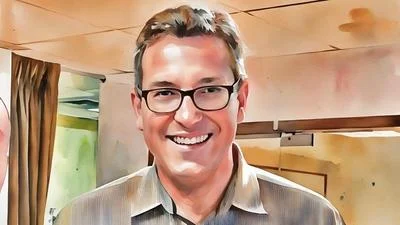A DSS CBRN response coordinator works with Joint Hazard Assessment Team partners to monitor radiological and nuclear threats during the 77th United Nations General Assembly, Sept. 20, 2022. (U.S. Department of State photo)
As the chemical, biological, radiological and nuclear (CBRN) response coordinator for the Diplomatic Security Service (DSS) Weapons of Mass Destruction (WMD) division, Dustin Temple provides 24/7 support for WMD incidents overseas that regional security officers at embassies and consulates might encounter.
During the United Nations General Assembly (UNGA), Temple dons a different hat – a JHAT, short for Joint Hazard Assessment Team. The JHAT is the interagency team that DSS partners with to monitor radiological and nuclear threats during UNGA.
“DSS and the JHATs have been doing nuclear and radiological detection since the U.N. General Assembly was designated as a National Special Security Event (NSSE) in 2016,” said Temple.
In addition to DSS, the JHAT includes subject matter experts from other federal agencies such as, Federal Bureau of Investigation (FBI), U.S. Department of Energy (DOE), U.S. Department of Homeland Security, U.S. Secret Service Technical Security Division, as well as state and local agencies such as National Guard WMD Civil Support Teams, New York Police Department (NYPD) Emergency Service Unit, and the Special Operations Command of the New York City Fire Department.
Trucks packed with sensitive WMD monitoring instruments line the street where the team is strategically staged near the United Nations. One team member said the truck he works in has more advanced equipment packed into it than a top-notch university laboratory.
A mobile laboratory prepares to process potential threat materials sent by JHAT patrols conducting preventive detection during the 77th United Nations General Assembly in New York City, Sept. 20, 2022. (U.S. Department of State photo)
The JHAT team focuses on preventive detection by making periodic roving patrols of New York City that use scanners in their vehicles to search for radiological and nuclear materials. The technology today is so accurate it allows the team to detect and identify specific isotopes from a significant distance. The data gathered from the scans are transmitted to DOE scientists at the WMD staging area for review. From there, the DOE scientists on site can share the data with colleagues at DOE national labs if it warrants additional analysis.
Scientists review radiological and nuclear data sent in real time from roving patrols conducting preventive radiological and nuclear detection during the 77th United Nations General Assembly in New York City, Sept. 20, 2022. (U.S. Department of State photo)
The JHAT also responds to reports of suspicious packages sent by NYPD officers on the street as well as other situations as directed by the Emergency Service Unit Hazmat Branch and Multi Agency Coordination Center. The rule is: If any JHAT team member gets a hit about a possible CBRN threat, they share it immediately.
“The work of the JHAT at UNGA is critically important,” said Temple. “DSS leverages the relationships we establish and cultivate at UNGA each year to help us ensure the safety of other events across the country like the Summit of the Americas earlier this year and the upcoming Africa Summit in Washington, D.C.”
A DSS WMD analyst coordinates with Joint Hazard Assessment Team partners prior to the departure of a morning roving patrol to conduct preventive radiological and nuclear detection during the 77th United Nations General Assembly, Sept. 20, 2022. (U.S. Department of State photo)
Original source can be found here.








